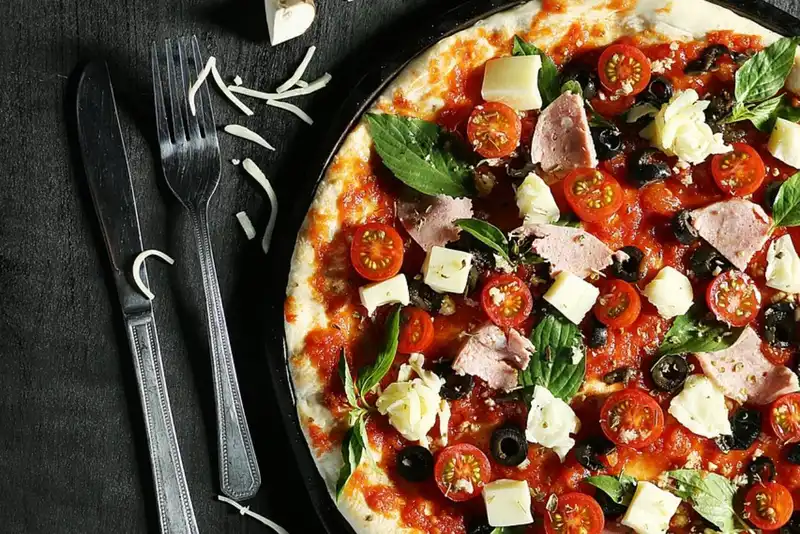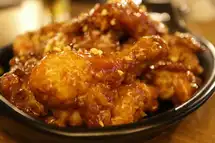What are fast casual restaurant trends?
Some of the latest trends in fast casual restaurants include healthier menu options, more international cuisine, and a focus on sustainability.
5 Fast Casual Restaurant Trends You Cannot Afford to Ignore
State of the US Fast Casual Restaurant Industry

The fast-casual restaurant space is challenging to define because it is constantly evolving. The term "fast casual" was first applied to Boston Market (earlier Boston Chicken) in the late '90s. Today, the term extends to brands like Panera Bread, Chipotle Mexican Grill, Shake Shack, Zoe's Kitchen and Five Guys Burgers and Fries.
Generally, fast-casual establishments offer customers an alternative to fast food restaurants, with healthier and more customizable meals. However, unlike traditional sit-down restaurants, fast-casual eateries typically do not have waitstaff or provide table service. But the concept of fast casual dining is still very much in flux. There are no hard and fast rules about what qualifies as a fast-casual restaurant. On the whole, these establishments tend to be more upscale than traditional fast food joints and quick service restaurants, but less expensive and more casual than most sit-down restaurants.
Even though it is difficult to define, the space is constantly growing. It is hardly surprising that most studies conducted around the restaurant business in the last couple of years have projected massive growth for the fast casual dining, compared to fine dining or full service restaurants. The market size of the fast casual restaurant segment was estimated to be at $125.6 billion in 2019, per Allied Market Research. It is anticipated to grow to $209.1 billion by 2027 at a CAGR of 10.6%.
Challenges Facing the Fast Casual Restaurant Industry

Covid, with its long closures and stringent social distancing norms, gave businesses a good beating. There were colossal bottlenecks in the supply chain, leading to shortage of ingredients. In addition, customer demands changed, with many preferring to order in instead of dine out.
The only way out was to innovate and use new technology. Operators in the restaurant industry believed tech could reshape operations, sales, workforce management, menus, and improve customer experience. And it did. More and more restaurant operators started embracing the change.
However, some issues continue to plague the fast-casual restaurant segment as much as any other segment.
- Take supply chains, for example. After two years of continuous bottlenecks in the supply chain, experts believed things would improve in 2022. However, the restaurant industry continues to feel the burn. High demand, escalated costs of shipping, clogged ports, increased fuel prices, and labor shortages in the supply chain management system have all been contributing to the supply crunch, affecting the operations of the restaurant industry, including fast-casual restaurants. A February 2022 Forbes report indicated that the supply chain crunch had slowed down the supply of vital equipment for restaurants, including new cooking equipment, and heating, ventilation, and air conditioning (HVAC) units. Additionally, the continued demand for takeout has led to a shortage of items, including coffee cups, plastic straws, and to-go containers.
- Fast-casual spaces need to offer food that is just as good, if not better, than traditional full-service restaurants. This can be challenging because customers expect quick service at fast-casuals, which doesn't always lend itself to gourmet fare. As a result, fast casual restaurants, especially Small Businesses, must work harder to balance speed and quality in order to succeed.
- Fast casual dining is also supposed to be cheaper than traditional sit-down dining. But for prices to stay low, labor costs must also be kept in check. Unfortunately, labor costs have gone up significantly in the restaurant industry, making managing finances a major challenge for fast-casual operators.
- Unlike a fast-food restaurant or a coffee shop, not all areas are conducive to fast casual dining -- some neighborhoods don't have the foot traffic or demographics to support such a concept. So finding the right location is crucial for any potential restaurateur in this space. And even when one has found a good spot, building awareness among residents can be tough. Breaking through the clutter with so many options available nowadays (traditional sit-down places, takeout/delivery joints, food trucks, etc.), it can be hard for any restaurant, even a well-run fast casual place, to stand out from the crowd and attract customers consistently.
- Because fast-casual space is still evolving, many restaurants in this category are still trying to figure out what they should be offering. What kind of cuisine? What atmosphere? Who is their target market? There's a lot of trial and error going on right now as restauranteurs try to figure out what works best for them.
The fast casual restaurant sector is constantly changing.
New trends are being introduced at an alarming rate, and it can be difficult to keep up with them all.
Fast Casual Trend No. 1- Limited-edition Menus
In September 2022, Chipotle introduced Garlic Guajillo Steak for a limited time at its stores in the U.S. and Canada. "We're listening to our guests' requests for intriguing new flavors," Nevielle Panthaky, Chipotle's vice president of culinary, said in a statement.
In the fall of last year, Sweetgreen, the seasonal fast-casual restaurant, brought back its fan-favorite Chicken & Brussels with spring mix and chopped romaine. It also had the Curry Cauliflower bowl and a plant-based take on chicken wings, the Buffalo Cauliflower Side Dish. All of it for a limited time. Earlier in November 2020, Sweetgreen partnered with Meati, a vegan meat company, for a plant-based protein option to its limited-time menu.
There's more! Five Guys has just added a pigs-in-blankets milkshake to its Christmas offering. Come again!? Thankfully, it's just for the festive season!
In addition to new items, there has been a recent shift towards limited edition menus, which gives fast-casual restaurants a chance to test different dishes. This is in response to diners becoming more adventurous, wanting to try new things, and willing to shell out more for them.
Social media is driving this trend. Customers are constantly bombarded with pictures and videos of food that looks delicious. They see their friends and celebrities trying new dishes, and when a neighborhood fast-casual eatery dishes out a limited edition item, they quickly line up for it. It is a win-win for the customer and the business. It gets customers in the door by offering them something new and exciting, creating a bit of buzz and word-of-mouth marketing. And it allows businesses to test out new menu items without committing to them for the long-term.
Fast Casual Trend No. 2- Globally-inspired Flavors
The rise of global citizens has led to the demand for more diverse and exotic flavors. This trend is driven by the younger generation, who are adventurous eaters. They are also more likely to travel, so they're familiar with a wider range of cuisines. Not to forget the exponential rise of social media that has been instrumental in introducing people to international cuisines.
People are looking for ways to add excitement to their everyday lives. Trying new foods is one way to do this. Fast-casual restaurants are responding to this development by offering dishes with globally inspired flavors. This trend will continue as we become more curious about the world around us.
Culinary experts are combining a bit of this and a bit of that to give customers an experience like never before. Chef Victor Albisu, who recently opened a six-unit fast casual dining, Taco Bamba Taqueria, with stores in Virginia and Maryland, blends his culinary training with his roots (Cuban and Peruvian) to develop global tacos. The Mrs. Hogan taco has a blend of Asian flavors- gochujang, kalbi pork, kimchi bacon fried rice, radish, and cucumber. The Bulgogi Bullfight features Brussels sprouts with kimchee, Korean pork, gochujang peanut romesco, peanuts, sesame seeds, and fried shallots. Then there's Fredneck BBQ with Morita slaw, barbecue pork shoulder, pickled onions, cilantro, and jalapeno.
Flavor fusion has taken over, and how!
Fast Casual Trend No. 3- Local Focus
Yes, there is a demand for global flavors. But food news is continuously talking about the farm-to-table and slow food movements. And these are what have pushed people to embrace local ingredients. In recent years, consumers have become more interested in where their food comes from and how it's produced, and they're willing to pay a premium for foods that are local, organic, and fair trade.
Like others in the restaurant industry, fast casual eateries are also following this trend. Taco Del Mar offers different cuisines with locally-sourced ingredients in its 100-odd stores. Brent Phillip, vice president of marketing and digital experience, said that each store having its own local flavor is an effective method of bringing in customers.
According to a 2017 report by the National Restaurant Association, almost half of all adults say they're willing to pay more for items on a menu if they know the food is locally sourced. In fact, locally sourced produce is one of the most important factors for customers when choosing a restaurant.
Local sourcing supports the economy, keeps money within the community and helps create jobs. Additionally, locally sourced ingredients are often fresher and healthier than those transported from long distances. Buying locally helps reduce our environmental impact by cutting down on emissions from transportation. What more can consumers, who are becoming more aware of the climate crisis, ask for?
The restaurant industry is evolving.
What are the top 10 trends that will shape the industry in 2022?
Fast Casual Trend No. 4- Customization
A Technomic report found that 58% of consumers said they were "somewhat" or "very" likely to visit a restaurant more often if it offered build-your-own meal options. This concept offers restaurants a way to stand out in a competitive market. As the fast casual category grows, so have the choices diners have when deciding where to eat. Offering made-to-order burgers or pizzas with endless topping combinations gives customers a good reason to choose one restaurant over another.
Many fast-casual chains are in fact customizing meals to appeal to millennials, who are known for their love for all things personalized. By offering meals tailored to individual tastes, these restaurants hope to win over this important demographic.
Customers have different preferences, and by offering customization, fast casual restaurants appeal to a wider range of people. It attracts more customers and increases the chances that those customers will return. Customization also allows fast-casual restaurants to charge more for their food since customers are willing to pay a premium for items tailored to their tastes.
Fast Casual Trend No. 5- Tech-first!
While many factors contribute to the success of fast-casual eateries, one key element is their embrace of innovative Restaurant Technology.
Growth comes with innovation, and new technology solutions are helping these establishments improve their operations. And we're not even talking about modern point of sale systems with mobile- and cloud-based solutions. There's a lot more...
Fast-casual restaurants are increasingly adopting online ordering systems to make it easier for customers to order their food. Then comes data analytics, an important new tool used by fast-casual restaurants that want to understand their customers better and make decisions based on customer behavior. By tracking data such as order history, menu selections, and even social media activity, they want to gain valuable insights into their target market. Close on its heels is social media marketing. After all, what do you do with all that data if you don't market your products better?
Then come self-service kiosks to help reduce queues and speed up the ordering process. Tabletop tablets have been a good alternative for restaurants that don't want to invest in full-blown kiosks. These devices allow guests to browse menus, place orders and even play games or access other content while they wait for their food.
With so many factors at play, the fast-casual restaurant segment will continue to grow steadily over the next decade, with many new businesses popping up to meet consumer demand. Since these restaurants have a smaller footprint than traditional full-service restaurants, they are able to keep overhead costs low. Customers have grown to appreciate them as well -- service is quicker, without a compromise in taste or quality. Clearly, the fast casual restaurant format is here to stay, experiment, and grow.
It’s hard to know what’s coming next.
The restaurant industry is constantly evolving. How do you stay ahead of the curve?

